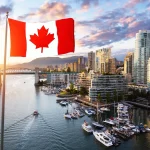Operational Culture is the Marine Corps’ capability to provide region-specific, operational culture and language familiarization training. This is accomplished by integrating social science paradigms into the doctrine, organization, training, materiel, leadership and education, and facilities (DOTMLPF) combat development pillars.
CAOCL provides cultural subject matter experts in support of deployed Operating Forces and conducts pre-deployment operational culture training for units deploying worldwide. These SMEs serve as reach-back for commanders, facilitating the incorporation of operational culture into the planning process.
Environment
The environment in which your organization operates can have a major impact on the way that its members view and deal with safety and security. A strong organizational culture that emphasizes the importance of safety and security can help to prevent accidents from occurring and reduce error rates.
A healthier culture in a health care system is believed to be associated with positive patient outcomes. However, few studies have been undertaken with sufficiently high quality designs to assess the strength of this association.
Taking time to conduct a frank assessment of your organization’s culture can give you the information needed to make strategic decisions that will improve safety and security in your workplace. Implementing teamwork training, conducting executive walk rounds, and establishing unit-based safety teams are all methods that have been shown to positively influence safety culture. These changes also promote the prevention of many health problems by addressing their root causes. For example, policies that encourage healthy eating habits can help to lower the risk of obesity and related diseases.
Economy
Economic complexity is a critical factor for the success of an expeditionary force. It requires the creation of new ideas to innovate and build unique products. This requires a culture that tolerates risk and rewards creativity. However, the research suggests that this can vary between cultures.
Cultural dimensions such as individualism may contribute to this variation, as individuals are more likely to seek autonomy and financial reward for their efforts. In contrast, a collective societal culture may be more likely to place the needs of others before their own interests.
The Marine Corps requires a Service-oriented concept of operational art to enable commanders to arrange coherent tactical actions in time, space, and purpose that deliver strategic effects. To do this, CAOCL provides subject matter experts to the expeditionary forces in direct support of their planning processes. These SMEs provide cultural advice and guidance; teach in-person and online courses for MEF and GCE; assist with scenario development; and serve as reach-back resources for deployed force commanders on operational design and culture issues.
Social Structure
The social structure of a culture is the enduring patterns and relationships between members of a society. It includes the kinship and family relations, communication structures (including the languages people speak), and other formal and informal institutions such as religion and government.
In a variety of ways, these structures limit and enable the behaviors of individuals. For this reason, they can be more important than individual agency in explaining outcomes. Social scientists have long recognized that structural factors sometimes take on a causal role, even when they are not standard causes of an outcome.
Sociologists who focus on this topic often call their approach structuralism. It is based on the idea that any social system has a structure that can be discerned by those who study it. This idea is rooted in the theory of Claude Levi-Strauss, who adapted a concept developed by the Swiss linguist Ferdinand de Saussure. The idea is that any language has a ”hidden” structure whose elements are related in nonarbitrary, regular, rule-bound ways.
Political Structure
Politics is competition for power over people and resources. It is not surprising that all societies recognize some kind of political leadership and organization. However, the structures and patterns of how these organizations function can be very different from what many individuals in modern large-scale societies expect to see.
Some small-scale societies have no politicians at all; while others maintain a form of democracy in which elected officials represent the entire population. Other societies may be ruled by dictators, or be part of a league of nations where power is shared among a group of countries who all work together for a common goal.
To meet the threat of COVID-19, ISAF will need to change its operational culture and focus on building strong personal relationships with its Afghan partners and protected population. This will require a space where they can talk freely and build trust, while providing structured ways of channeling dissent to avoid the risk of civil unrest.









